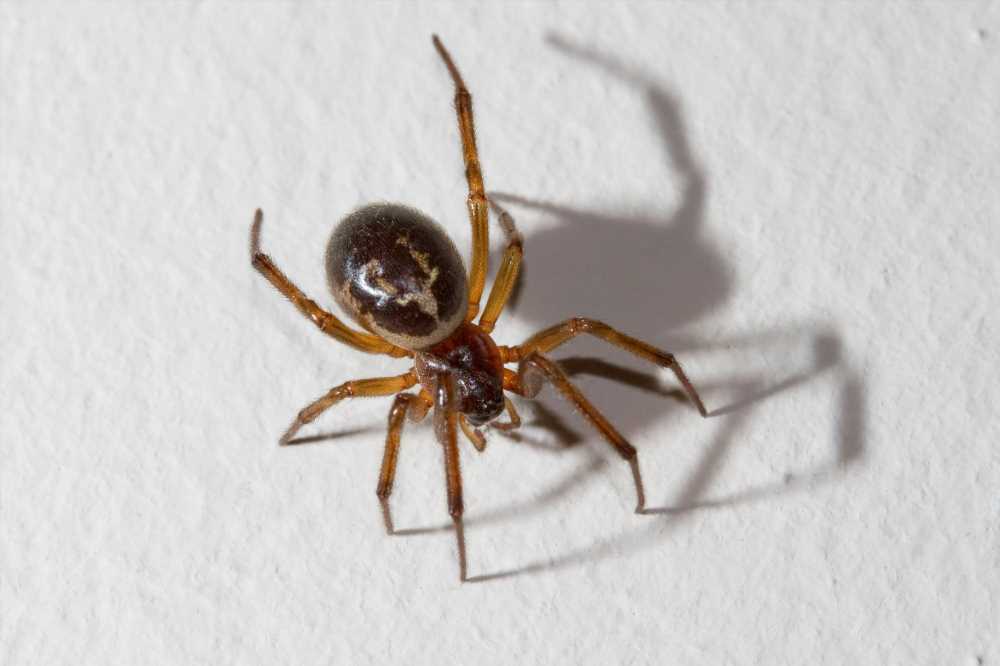FALSE widows have been described as the 'most dangerous spider in Britain'.
They're often confused with deadly black widow spiders, as they have a similar dark-coloured, globular body.
But they're nowhere near as dangerous: for context, the venom of the black widow spider tends to be over 1,000 times more powerful than that of the false widow.
In most cases, false widows only give small, relatively harmless bites.
But the species have gained a foothold in the UK and often creep into homes and indoor spaces, especially as the weather gets colder.
They're usually black or brown coloured, with a rounded body and relatively small, growing up to about the size of a small finger-nail. Females' bodies grow up to about 15mm.
Read more on false widows
I was bitten by a false widow spider – now docs amputating my rotting toe
How to get rid of false widow spiders from your home
Are there false widow spiders in the UK?
Six false widow species live permanently in the UK, after first being recorded in the area during the 1870s.
According to the Natural History Museum, the most commonly spotted species – the noble false widow – was likely a stowaway on cargo ships from Madeira and the Canary Islands.
Other species of false widow common to the UK include the rabbit hutch spider and cupboard spider.
You'll be able to spot them from the distinctive markings covering their belly: they they have a narrow white or lighter band around the front of the abdomen towards their head, and also other markings that vary by species.
Most read in Health
Outbreak fears as man, 28, 'critical' with coronavirus with 35% mortality rate
Breakthrough for thousands with 'silent killer' disease
Union branded 'hypocrites' for demanding 35% pay rise but paying staff 5.25%
From a weak grip to finger length – what your HANDS reveal about your health
In noble false widows, these markings have been described as skull-shaped.
What does a false widow spider bite look like?
A spider bite will usually leave you with small puncture marks on the skin, which can be painful and cause redness and swelling, NHS guidance states.
According to falsewidowspider.org.uk, you won't usually realise you've been nipped by a false widow until afterwards when you start to feel some pain radiating from the site.
It ordinarily lasts between one and 12 hours, and rarely for more than 24 hours, according to the Natural History Museum.
Often, the symptoms are no worse than the pain of a wasp sting, it added.
It's been described as a stinging, burning feeling. You might also notice some swelling and numbness on the site.
Are false widow spider bites dangerous?
Symptoms of false widow bites tend to beno worse than the pain of a wasp sting.
But in rare cases, some people have come down with horror injuries after reacting badly to being nipped.
Frank Fox, 60, was bitten by a false widow spider hiding in his slipper – now his toe is rotting off and doctors are going to amputate it.
Meanwhile, Adam Roberts, 37, said she needed hours of surgery and almost lost his finger after being nipped by the usually harmless arachnid.
However, the Natural History Museum notes that reports of sinister symptoms like rotting flesh and excruciating pain are usually not backed up with formal spider identification.
It added that any extreme side effects experienced are most likely the result of a secondary infection – most likely a bacterial one – if the wound is not kept clean.
The Natural History Museum also noted that false widows only bite when they feel threatened or they get trapped against your skin.
According to falsewidowspider.org.uk, the bite of a false widow spider will not cause your flesh to rot and they will certainly not kill you.
Read More on The Sun
I took my kid to the best indoor water park – but everyone says the same thing
Catfish has no front teeth but looks like Mariah Carey with makeup on
How should I treat a false widow spider bite?
If you're unlucky enough to be nipped by a false widow, you should do the following:
- Wash the area with soap and water to prevent infection
- Apply a cold compress or bag of frozen peas to the bite to minimise swelling, for around 10 minutes
- Apply a bite spray or antiseptic cream to help prevent infection
- You can also use antihistamines to counter any possible allergic reaction
- Seek medical care if your symptoms worsen
- Try and identify the spider that bit you if you can to help medical staff with their treatment – but without getting bitten again!
Source: Read Full Article











